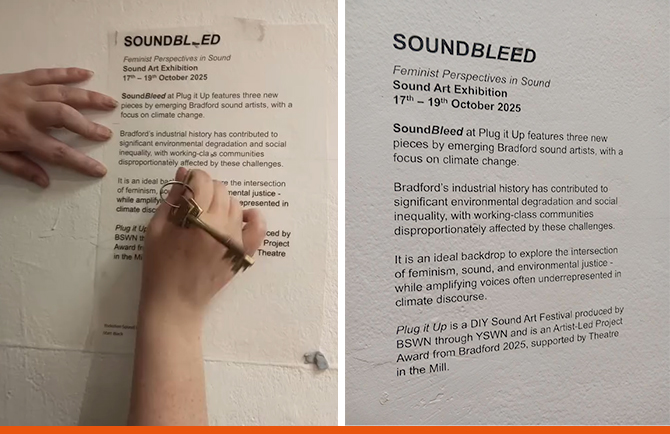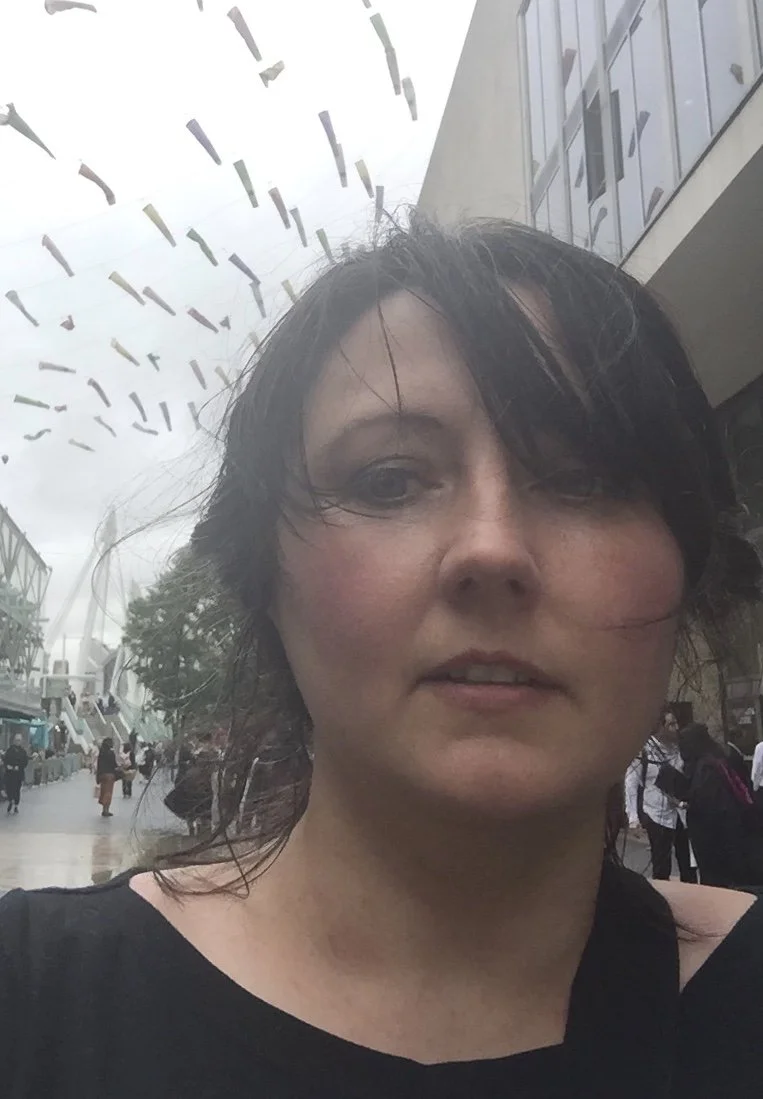
Our dry transfers are ideal for exhibition usage. With A5 to A3 sheets available, whole sections of text can be set up for transfers onto wall spaces, plinths, divides, labels and titles of pieces. These can encompass paragraphs of text, numbers and symbols for bespoke or dedicated exhibition and gallery spaces.
Here Claire Kearns, Artistic Director & Creative Producer, takes us through her project requirements and how the BEL Signs team helped, step-by-step, to get them produced.
Bradford Sound Women Network Project introduction:
I run Bradford Sound Women Network, a voluntary group for women local to Bradford who are interested in Sound Art. When Bradford was awarded City of Culture status, the regional arm got in touch and asked if we planned on doing anything and if they could help. I said I’d like to run a festival, bringing all the artists we had worked with into the same space at the same time, along with local artists to grow the group and build interest. We were (eventually!) successful in our bid for the Artist Led Project Award, and it is the first time I have run anything to this scale. We had international artists flying in from Sweden and New York to perform, national artists from London, Bristol and Blackburn running workshops, mentors from around Yorkshire helping emerging artists from Bradford exhibit work for the first time – and this exhibition is why we needed Dry Transfer! The festival was called Plug it Up, and the exhibition strand was called SoundBleed and was in Gallery II, University of Bradford.
Finding dry transfers for exhibition use
As an exhibitor, I know of dry transfers that curators use in the gallery space, but I never knew the correct term. Artists are not usually involved in curation at a high spec level for presentation and arranging the work. Dry transfers, or dry rubs, look so much slicker than foam-mounted printouts – these can get smudged and look tatty unless the curator is very skilled. Being a grassroots DIY outfit, I’m not. It’s quite usual for an artist to be able to articulate what their work is about after the process of making, so the turnaround for information can be quite tight, as it was in this case, and so I wanted the look without the precision needed.
I asked ChatGPT what the term was for the transfers I needed, and asked it for local to UK examples. I dithered for about a week, worrying it’s not the right type of signage, or that it would transfer backwards like ‘ambulance’, and I’d need loads of mirrors, or maybe I’d get the wrong font size or type and it would be unreadable. Time pressured, I just picked up the phone and rang. The staff talked me through the whole process, from the fonts typical for this type of display, to the depth of colour and how to arrange them on a sheet. They even told me step-by-step how to upload my request using software I had access to, but had never known how to use! This was a bit above and beyond what I was expecting; they were so supportive.
A3 Matt Black Dry Transfers for SoundBleed
This is my first time using dry transfers, but it was my favourite bit of putting the exhibition together. Next time, I’d go bigger for the exhibition blurb that’s usually on a wall facing the entrance. As they’re A3, this would take some jigsaw-type planning.

Thanks to the Bradford Sound Women Network Project
Share your dry transfer journey with us
It is a pleasure to see our dry transfers out in the world and the variety of uses they have. We would love to share other projects, prototypes, models, restoration, instruments, refurbishments and more.
Get in touch with our marketing department: marketing@belsigns.com

